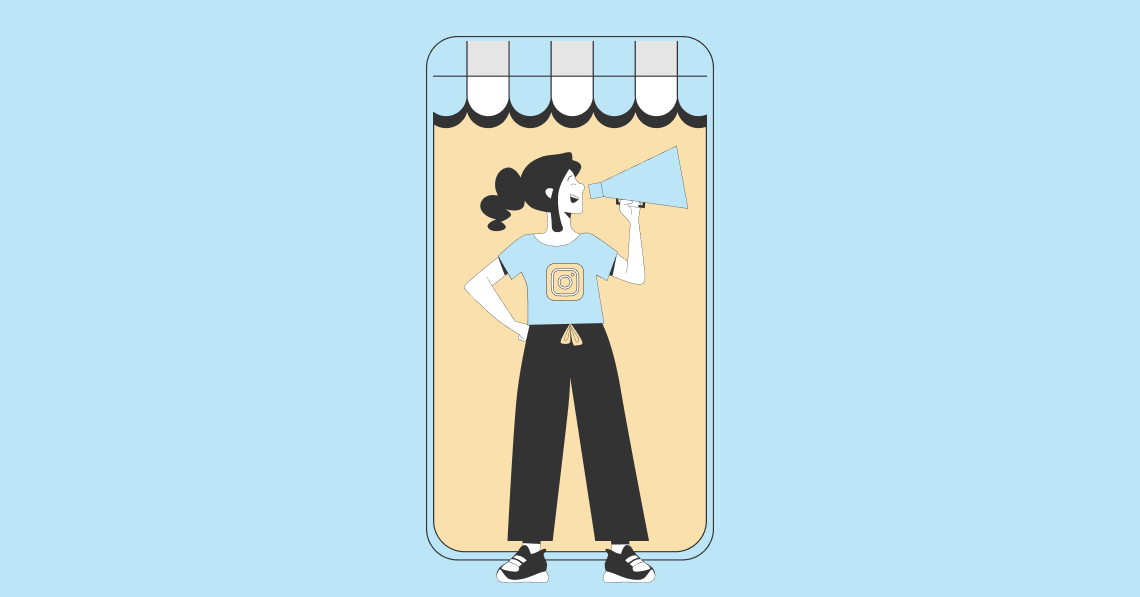HypeAuditorrecently commissioned a report on The State of Influencer Marketing in 2019. It makes fascinating reading.
这份长达55页的报告涵盖了影响者营销的许多面孔,但我们发现其在Instagram金博宝188备用网址性能和基准测试方面的部分以及2018年Instagram营销欺诈特别有趣。我们在这篇文章中专注于这些部分。
HypeAuditor sourced its data from a wide variety of sources, including market research agencies, internet, and social media companies, news media, and their own internal analysis. They collected and aggregated open data from social platforms, catalogs, websites, crowdsourcing, and other sources.
Instagram Influencers' Performance, Benchmarks, and FRAUD:
Instagram影响者的性能和基准
Engagement Rates

It shouldn’t surprise anyone that smaller Instrgammers can manage higher engagement rates than their larger counterparts. Nano-influencers and ordinary people have more time to engage with their limited number of followers than the mega-stars do. Also, it doesn’t take many acts of engagement to make a noticeable difference if you don’t have many followers.
It makes sense that celebrity and mega-influencers have the least engagement on their accounts. Many people follow them merely because they are famous. It doesn't mean that they necessarily take a great interest in what they have to share.
Of course, 1.97% engagement for somebody with 1 million followers implies 19,700 acts of engagement. 5.60% engagement for an account with 5,000 followers suggests an average of 280 acts of engagement. The smaller accounts may encourage comparatively more engagement, but the raw numbers for larger accounts by far outweigh engagement on everyday accounts.
HypeAuditor相比也参与结果for this year with the 2018 results. They found that engagement has increased at all follower sizes between 2018 and 2019. For all groups of influencers (except for one follower band) the engagement rose by 22-25% over the year. The exception was for those with between 5K and 20K followers, who only increased their engagement by 6%.
Comparing Influencer Engagement and Interactions Across Countries
如果您比较不同国家 /地区的平均互动和互动,则存在明显的差异。
Influencers from the United States

It is probably not overly surprising that the statistics relating to US influencers are relatively average compared to other countries. It can be seen that the audience of nano-influencers are more likely to like and make comments than the followers of larger influencers (although they are dwarfed in terms of raw figures, obviously). There is a definite drop in engagements per follower once influencers reach 5,000 followers.
英国的影响者

在喜欢和评论方面,英国影响者还倾向于遵循相当典型的模式。他们的纳米影响者观众几乎与他们的美国同行互动。
One notable difference in the UK compared to US influencers is that the engagement falls off less sharply as follower numbers rise, and actually increases (in terms of likes at least, for the celebrity mega-influencers.
Influencers from India

Indian influencers enjoyed some of the highest engagement in HypeAuditor’s survey. Indeed, they had the best raw Likes and Comment numbers for both nano-influencers and the smaller micro-influencers. Indian celebrities also enjoyed the best engagement rates, and these were up from the figures for influencers with between 20K and 1M followers.
HypeAuditor did observe that users from India were more likely to leave a like than a comment.
来自德国的影响者

Germany was the other country to show significantly more engagement from the followers of their influencers. As you can see from the above chart, they topped the engagement rate stats for everybody except celebrities. And even celebirites’ followers liked to leave comments.
Indeed the average number of comments made by the followers of German influencers was the highest anywhere.
Influencers from Brazil

Brazillian influencers suffered from having the least active followers in the survey. Even nano-influencers had low engagement rates, and influencers with greater than 5,000 followers had exceedingly small engagement.
You have to wonder whether Brazilian influencers suffer from fake followers more than other countries, as such a low engagement rate indicates a high probability that the follower count of these influencers is inflated artificially.
Instagram Marketing Fraud
高级高级人士在2018年将其报告的整章致力于Instagram营销欺诈。他们首先为无欺诈的影响者设定了一个定义:“一个有影响力的人在追随者中有很大一部分真实的人,真实的参与,而对[他们的]没有异常的影响追随者和追随者图。”
How to Detect Influencer Fraud
You should go through the following steps each time you check an influencer's account:
- Run through the person's list of followers; and look for any distinct bad and inflated followers
- Check the likes of the last 12 posts of the influencer, for anything unusual
- Check the comments on those posts, and look at the pages of the accounts that wrote them.
国家对无欺诈影响者的变化

Although there aren't massive variations in fraud-free accounts between countries, there is still a reasonable gap between the best country (Japan) and the worst (Italy). It is perhaps concerning that even in Japan, only half the so-called influencers run fraud-free accounts. In Italy, only one-third of the "influencers” are fraud-free.
Audience Quality Score

发现最重要的帐户是受欺诈影响最大的帐户,这可能并不奇怪。相反,接受调查的纳米影响者倾向于最有可能无欺诈。
The large accounts probably suffer from the sheer volume of spam. They usually don’t have the time to vert all of their followers, and some “rubbish” accounts slip through the net.
HypeAuditor also noted the relatively small number of fraud-free accounts with between 20K and 100K followers. They believe this is a reflection of inauthentic methods of Instagram growth.
异常生长
Most influencers increase their number of followers gradually. Sure, there can be some spurts in follower growth thanks to some promotion methods, advertising, mentions in media or a shoutout from another influencer, but as a whole, all fraud-free accounts show a similar pattern.
Some people cheat and use inauthentic ways to gain followers, however. Accounts that increase their follower numbers artificially will show sudden rises and “hockey-stick” growth on a Followers graph.

这在俄罗斯尤其明显,其中超过30%的影响者采取了不真实的措施来吸引追随者。其中包括购买追随者和参加“循环赠品”。
The effect is even more evident when you compare different sized accounts.

Here, you can see that the worst offenders are those who have just broken out of the nano-influencer zone. Many buy followers to kick-start the growth of their accounts. The mega-influencers and celebrities, however, gain followers by more organic methods.
Using Follower/Unfollower on Instagram
There’s a common trick used by “influencers” on Instagram to gain mass followers. You follow a three-step process:
- The influencer follows somebody, often also liking or commenting on one of their posts
- 该人跟随有影响力的人回报
- The influencer then quietly unfollows the person in a couple of days
影响者使用特殊工具来自动执行此跟随/取消关注过程。
You can spot somebody who used this process because they tend to have spikes in their Number of Followers graph over a time period.

This Follow/Unfollow practice is particularly common in Russia, although less so in Japan.
Inauthentic Comments
There is only value in a comment if it is made with genuine intent, and has something worthwhile to say. Comments to tag-to-win giveaways and contests, spammy comments, and comments that come from Instagram Pods are inauthentic. Comments that consist of only emojis or words like "wow," "cool," and "fantastic" are of very little value. Other useless comments are often monosyllabic, dull, and irrelevant. Some comments even merely consist of a one-word mention of another account.
从以下图中可以明显看出,最大的帐户是发表毫无意义的评论时最糟糕的罪犯。这通常是因为某些使用其他影响者和Instagram用户来发展帐户的垃圾邮件方法。

Comment Pods
Sometimes bloggers group together to create a comment pod. They gather on the social network chats (or other specialist chats like Discord) and comment on each other's posts.
These comments are harder to spot than other fake comments because real people write them; many may be well-written.
They tend to be more favored by smaller influencers because being part of a comment pod is still a manageable task for them. Once your account grows in size, this method becomes less effective.

Automatic Likes
Automatic likes are one of the more common types of fake engagement. You will often find less reputable businesses offering to sell likes, and can even see people advertising the service on places like Fiverr.
Many of these likes come from fake bot accounts. It is usually easy to spot these accounts. They are often private accounts with few photos and a near-empty bio. Sometimes they may even have strange account names – just a random mix of numbers and letters.
Accounts that buy automatic likes tend to have an almost identical number of likes on every post they make. Often they have very high engagement rates – much higher than the norm.

As you can see, Russia has by far the biggest problem with automatic likes, with Brazil having the smallest number.


